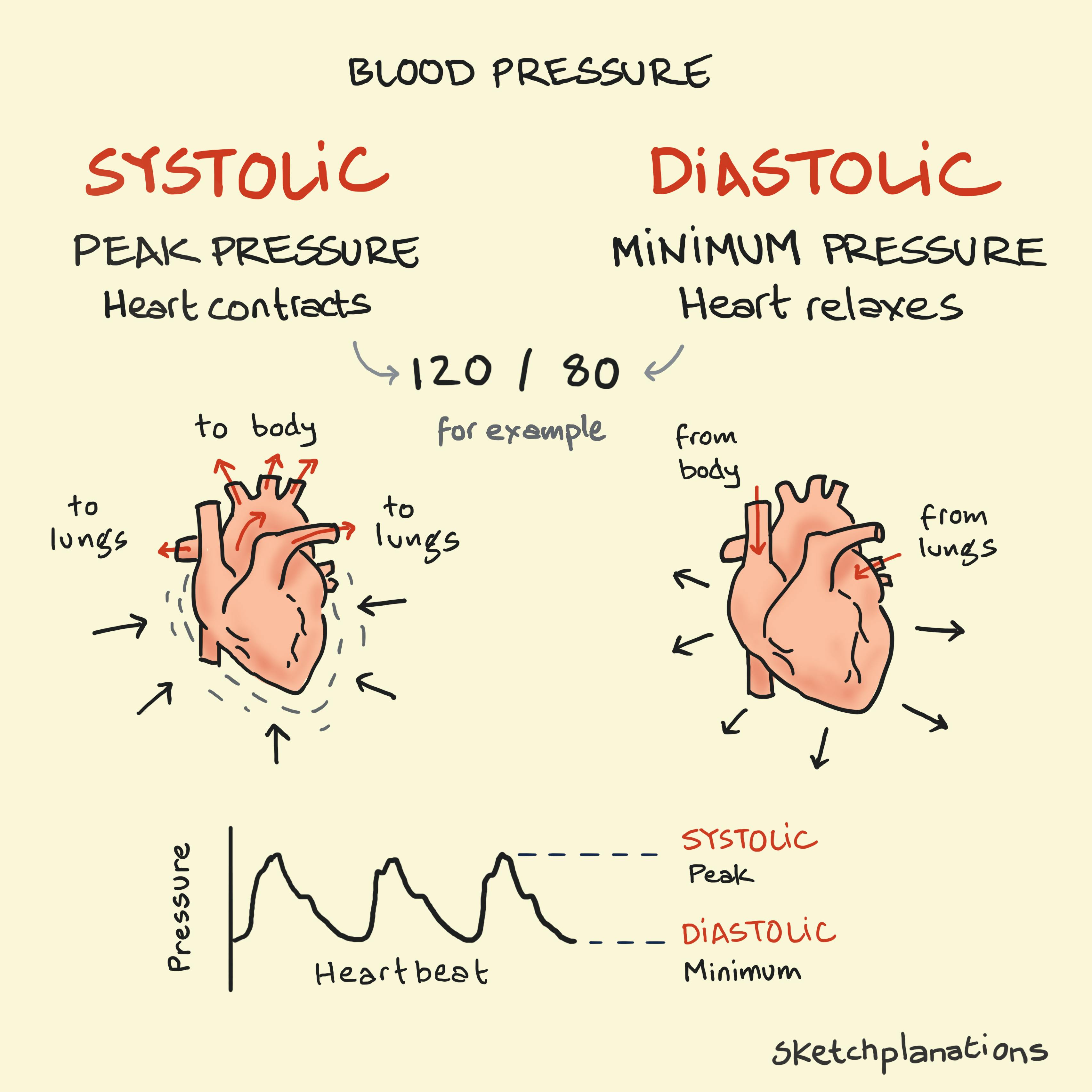Systolic and Diastolic Blood Pressure

- Prints
- Copied!
👇 Get new sketches each week
When a doctor or nurse takes your blood pressure, you’ll usually be told two numbers — for example, 120 over 80. But what do these numbers actually mean?
Understanding Blood Pressure Readings
A blood pressure reading measures how strongly your blood pushes against your artery walls as your heart beats. About once every second, your heart contracts and relaxes — your heartbeat. Each contraction pushes blood to your lungs to exchange carbon dioxide for oxygen and sends oxygen-rich blood around your body.
Inside your heart, a set of clever valves ensures blood flows in just one direction — out to your body during each contraction, then back in to refill the heart as it relaxes.
Systolic Blood Pressure
When your heart contracts, it forces blood out at its peak pressure — this is called systolic blood pressure. It’s the higher of the two numbers in a blood pressure reading.
For example, in a reading of 120/80 mmHg, the 120 is your systolic pressure. It shows how hard your heart is working to pump blood through your arteries during the systole phase.
Diastolic Blood Pressure
When your heart relaxes between beats, the pressure in your arteries drops — this is called diastolic blood pressure. It's the lower number in your reading and represents the baseline pressure as blood continues to flow even while the heart rests. This occurs during the diastole phase, when the heart refills ready for the next contraction.
A generous reader shared an analogy with me:
Imagine a garden hose watering the grass.
If you stomp on the hose the height of the spraying water briefly goes up from the extra oomph from the foot. This is analogous to the heart contracting (systolic).
If you then raise your foot, the height of the spraying water goes down, but it continues to flow. This is analogous to the low flow state when the heart expands and refills (diastolic).
An Example Blood Pressure Reading: 120/80 mmHg
So, in a normal blood pressure range like 120/80:
- 120 – Systolic blood pressure (heart contracting)
- 80 – Diastolic blood pressure (heart relaxing)
Together, these two numbers give a clear picture of how your heart and blood vessels are functioning — whether your blood pressure is normal, low, or high.
The pressure readings, e.g. 120 mmHg, are values above atmospheric air pressure, which at sea level is usually around 760 mmHg. So the absolute pressure in this case would be 880 mmHg (120 + 760).
The unit mmHg means millimetres of mercury. It corresponds to early pressure gauges that measured pressure by the height of mercury in a glass column.
Related Sketches to Systolic and Diastolic Blood Pressure
Also see:
- 1.5 billion heartbeats in a lifetime
- The half-life of caffeine
- Biceps, Triceps, Quadriceps
- Proprioception
- Crossmodal perception
- Anatomy of a wave
In case it's not obvious, this is not medical advice, and I am not a doctor—I just wanted to know what those two numbers really meant when someone took my blood pressure.

